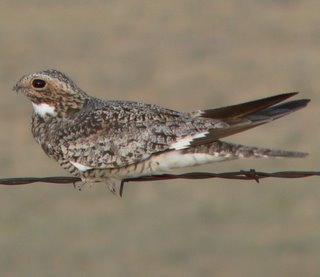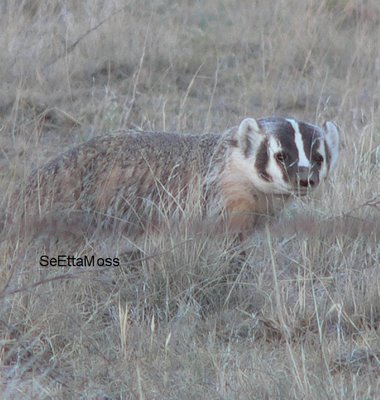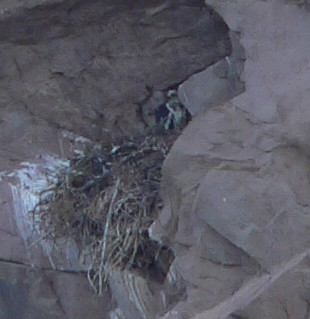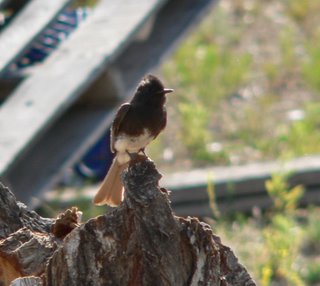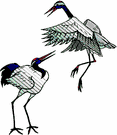Florence Mtn Park/Newlin Creek SWA & San Isabel Nat Forest
As it was a pretty hot day today in the Canon City area (mid 90's), drove up to the Florence Mountain Park which is just over a half hour drive. Florence Mtn Park (yes, it is owned by the town of Florence, Colo) sits in the forested foothills at the base of the Wet Mountains. There is a picnic area with several picnic tables and a porta potty there. A Florence employee lives in a house on the grounds of the park which provides security (helpful as the park is only 7 miles out of Florence and would otherwise be place for youths to drink, etc.
Like many foothill areas, it begins with a move from decidous trees to pinyon-juniper. Much of this park is mixed pine--pinyon pines, great ponderosa pines, southwestern white pine plus a lot of scrub (Gambel) oak. In addition to good birding, the views of Pike's Peak and the plains below seen from the lower part of the park are great.
On the south side of Florence Mtn Park transitions to Newlin Creek State Wildlife Area (SWA) where one trailhead for Newlin trail is found. I walked up this trail for several hundred feet looking for birds. A Plumbeous Vireo sang frequently. I found some bear scat, though it was dry so not fresh. If one continues driving the main (dirt) road, it ends at another trailhead for Newlin Trail in the San Isabel National Forest.
It was pretty hot here too as the elevation is only around 6,000 feet. The birds were quiet until it clouded over as a storm approached, cooling the area and apparently invigatoring the avian inhabitants. Spotted Towhees began calling, one coming in to check me out. An Abert's squirrel ran across the picnic grounds. These cool squirrels have tassels on the tips of the ears. These unique squirrels are found in "forests of mature ponderosa pine" (per Colo Div of Wildlife). Some Crows flew over, calling a few times but hidden visually by the dense forest.
Although I saw only 1 Ash-throated Flycatcher, I suspect there were likely several in the area. This species is found "exclusively in pinyon-juniper and riparian" habitat in Colorado (per Colorado Breeding Bird Atlas). Several male Western Tanager's flew around the area. I saw both a Virginia's Warbler and a Scrub Jay, again I suspect there were several of each around. A number of Broad-tailed Hummingbirds flew past, often engaged in a chase as the males made their characteristic metallic trilling noise.
I also watched a red fox amble down the road. Thought I didn't see any today, this area (like most areas around here) host mule deer, black bear (as demonstrated by the scat I saw), as well as bobcats (they have been seen in the area though not by me) and probably mountain lions given the rugged rocky location.
Though all these, and more, birds can be seen at many foothills locations, it is nice to be able to access the habitat in parks and other areas that provide more convenient access. Fremont County has many acres of both BLM and Forest Service lands as well as several State Wildlife Areas open to the public, and many can be accessed by hiking directly in from the road. However, those not interested in bushwacking will find areas like Florence Mtn Park more user friendly.
SeEtta

